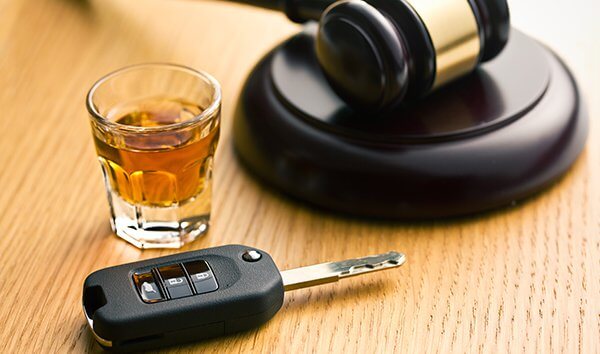Toronto’s Defence Lawyer for Dangerous Driving Charges

Pursuant to Section 320.13 of the Criminal Code, a dangerous operation occurs when an individual operates a conveyance (a car, motorcycle, boat, etc.) in a manner that, having regard to all the circumstances, is dangerous to the public. It does not matter if the driver did not cause an accident—it is an offence to drive in a dangerous manner regardless of the outcome. The Code creates separate offences where the dangerous operation causes death or bodily harm to another individual.
In all cases, the consequences of a dangerous operation conviction may be serious, but particularly where the driving results in death or bodily harm to another person. In addition to the potential fines and periods of imprisonment, Criminal Code driving prohibitions often flow from convictions for dangerous operations. Individuals subject to a driving prohibition cannot drive a motor vehicle on any road, highway, or other public space. The prohibition applies across Canada and includes vehicles that do not require a driver’s license to operate, such as a forklift or e-scooter. These prohibitions are discretionary; however, once imposed, a judge cannot make any exceptions to the order, even where an individual’s employment requires the person to drive. As a result, driving prohibitions can profoundly disrupt an individual’s life.
A conviction for dangerous operation also results in an automatic suspension of the driver’s license for a period of at least one year. The period of suspension increases with subsequent convictions. Individuals convicted of dangerous operation must also complete a driver improvement interview and a driving exam and pay any outstanding fines and a re-instatement fee before their license can be reinstated.
FAQ
What is the difference between a Highway Traffic Act offence and a Criminal Code offence?
The Highway Traffic Act is Ontario’s provincial driving legislation. If you are convicted of an HTA offence you will not receive an entry on your criminal record, however there are still serious consequences that can attach to an HTA conviction such as:
- Fines
- Probation orders
- Demerit points and licence suspensions
- Imprisonment
What is Dangerous Operation?
Under the Criminal Code, dangerous operation occurs where an individual operates a conveyance (a car, motorcycle, boat etc.) in a manner that, having regard to all the circumstances, is dangerous to the public. It does not matter if the driver did not cause an accident—it is an offence to drive in a dangerous manner regardless of the outcome, although the penalties are more serious if the dangerous operation resulted in death or bodily harm.
Can I be convicted of dangerous operation for falling asleep at the wheel?
Yes. You can be convicted of dangerous operation for falling asleep at the wheel if:
- You started or continued driving when there was a real risk of you falling asleep; AND
- You knew or ought to have known it was dangerous to do so because there was a real risk you would fall asleep
What are the penalties for dangerous operation?
There are mandatory minimum penalties for dangerous operation, whether the Crown proceeds summarily or by indictment. In both cases, drivers are liable to a minimum punishment of:
- $1000 for a first offence;
- 30-days imprisonment for a second offence; and
- 120 days imprisonment for each subsequent offence.
For summary convictions, drivers are liable to a maximum $5000 fine and/or two years less a day in custody.
For indictable offences, drivers are liable to a maximum of 10 years in custody.
In cases where the dangerous operation resulted in bodily harm, the maximum term of imprisonment increases to 14 years, and where the dangerous operation results in death, the maximum term increases to life imprisonment.
What is Careless Operation?
Careless Operation is the Highway Traffic Act charge that captures dangerous driving behaviour. Careless occurs where an individual drives a vehicle or street car on a highway without due care and attention or without reasonable consideration for other persons using the highway.
If you are convicted of Careless Operation under the HTA you are liable to:
- A fine not less than $400 but not more than $2000;
- Six-months imprisonment;
- A two-year licence suspension
A conviction for Careless Operation will also attach six demerit points to your licence. The penalties are increased where the Careless Operation results in death or bodily harm.
Don’t delay – contact an experienced criminal defence lawyer with decades of experience to have the best chance of winning your case.
call us 24/7
Legal Practice Areas
Sexual Assault Lawyer
White Collar Crime & Fraud Lawyer
Murder Defence Lawyer in Toronto, Ontario
Fail to Remain Defence Lawyer in Toronto, Ontario
Toronto’s Trusted Criminal Harassment Defence Lawyer
Adept Defence Lawyer for Court Order Breaches
Experienced Assault Lawyer in Toronto, Ontario
Academic & Professional Tribunals Defence Lawyer
Criminal Appeal Defence Lawyer in Toronto
Child Pornography & Luring Defence Lawyer in Toronto
Domestic Assault Charges Lawyer in Toronto, Ontario
Homicide & Manslaughter
DUI Lawyer / Impaired Driving
Drug Possession Charges Defence Lawyer in Toronto, Ontario
Toronto’s Defence Lawyer for Criminal Code Offences
Young Offenders
Experienced Lawyer for Property Offenses
Skilled Defence Lawyer for Sexual Assault Charges
Our Criminal Defence Lawyers

Boris Bytensky LL.B

Sonya Shikhman LL.B

Brittany Smith J.D.

Kathryn Doyle J.D.
Don't Let A Criminal Charge Destroy Your Life
Our service area
Get 1 Free Hour Consultation!
Register with us to schedule a free consultation
What Clients Say About Us?



























